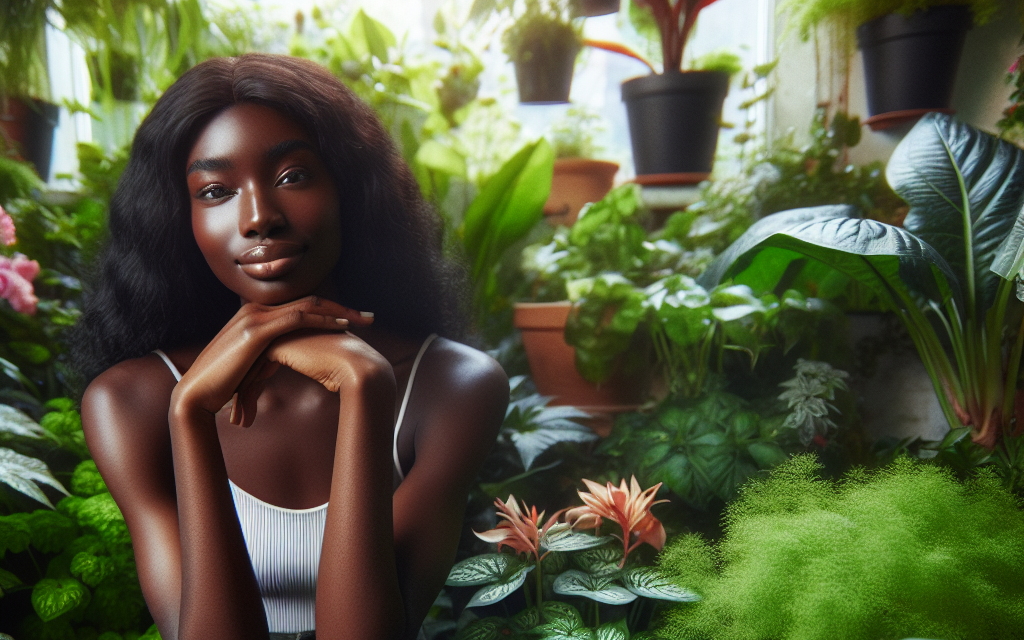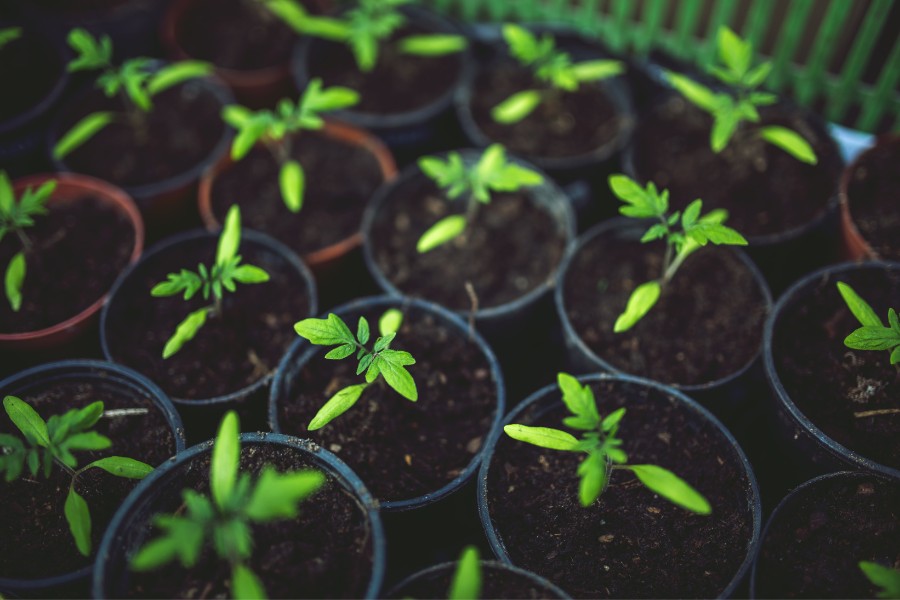All Posts
The Ultimate Guide for Plant Lovers: Greenhouses and Plant Trellises
The Joy of Gardening

People who are in love with plants know this feeling. It is not simply a hobby, but rather a source of happiness, comfort and multiple health benefits among others. It creates abundant pleasure beginning from turning living spaces into verdant gardens to the satisfaction that comes from rearing and nursing plants. This section focuses on the health benefits of indoor plants as well as the therapeutic properties of gardening.
Health Benefits of Indoor Plants
Indoor plants can make an environment more beautiful and provide several physical advantages. The removal of toxins and increased oxygen levels enhance air quality. In cities where air pollution is a major concern, such improvement will contribute to healthier living conditions.
Also, indoor plants help to increase humidity in dry environments which benefits respiratory health (Source). This becomes particularly useful during colder months when indoor air tends to be dry. Learn more about the advantages of indoor plants from our article on greenhouse accessories.
Therapeutic Effects of Gardening
Gardening does not end with the harvests but begins at planting time, watering time, pruning time and watching them grow process which has a healing effect by itself. Taking care of plants can give us a purpose in life thus improving our holistic mental wellness.
Similarly, being around plants or surrounded by nature reduces your stress levels thereby improving relaxation (Source). Additionally, it can enhance creativity while increasing cognitive functions. Whether you’re a flower gardener or a vegetable gardener, gardening’s therapeutic effects can be life-changing.
For further insights into joys and rewards of gardening read our gardening tips and tricks. We’ve got your back covered from the best climbing plants for trellises to ideal trellis for indoor plants. Happy gardening!
Must-Have Plants for Gardeners

We plant enthusiasts know that each garden has its own personality reflecting the tastes and vibes of the gardener involved. Nevertheless there are few flowers we think should be grown in every garden. They are versatile, colorful and can bring a unique charm to your garden.
Versatility of Lavender
This is an all-round plant that can bring many advantages to your garden. It smells nice and paves way for the bees apart from adding some purple color to it. Lavender also has practical uses in the kitchen and for arts and crafts making it a ‘must’ for every gardener.
Low-Maintenance Succulents
For beginners or individuals who want plants they don’t have to do much about, select succulents. They come in different shapes, sizes, and colors and can be grown both indoors and outdoors. Succulents require little attention hence they are ideal for first-time gardeners. Besides being small, they are great additions to any small space gardening system.
Cheerful Sunflowers
Any garden will lack life without opulent sunflowers. They are easy to grow into towering beauties which brighten up any garden with their colors. Furthermore, sunflowers attract birds as well as butterflies thus enhancing your outside space with more energy or life. See our gardening tips and tricks on how best to grow sunflowers.
Homegrown Tomatoes
Growing your own food is satisfying, and most gardeners prefer tomatoes. These versatile fruits require full sun and regular watering; they can be grown in containers or right into the ground. Home-grown tomatoes taste better than bought ones, making them a great addition to any vegetable garden.
Classic Elegance of Roses
No list of must-have plants would be complete without roses mentioned there. Roses bring a touch of class to any garden with their classic elegance and sweet fragrance. They come in different colors and sizes, but do require regular pruning and maintenance to thrive; however, these efforts will pay off eventually.
While on this journey to creating your dream garden remember that it’s not just about attractive plants. It’s also important to create a balanced ecosystem that enhances biodiversity and contributes towards the overall health of your garden. Whether you are a flower gardener or a vegetable grower, we hope this list of must-have plants will inspire you to experiment with your garden and discover new favorites.
Exploring the World of Epiphytic Plants
Epiphytes are one group of plants that are always interesting for plant lovers like us as they are very diverse in terms of their characteristics. These unique organisms have adapted themselves to survive where other species cannot possibly exist. Epiphytes comprise various kinds of plants including some which are quite popular among people who love gardening like bromeliads and air plants.
Understanding Epiphytes
Epiphytes attach themselves onto other plants or objects for support. Surprisingly, they don’t get nutrients from their hosts but instead get it from the air and rainwater. Epiphytes and air plants usually have short roots or root systems because they do not depend on soil for food. Instead, they possess specialized structures such as trichomes through which moisture is absorbed from the atmosphere.
Fascinating Air Plants
Airplants, sometimes referred to as Tillandsias fall under this category as well; they are found in tropical rainforests, deserts and other diverse environments. The main thing about them is that they do not need soil and this opens up a wide range of creative display possibilities. For instance, they can be mounted on driftwood, placed in glass terrariums or even hung mid-air. These plants are fun and unique to have around your home or greenhouse. Check out our gardening tips and tricks for more ideas on how to display and care for your air plants.
Vibrant Bromeliads
Bromeliads are also another type of epiphytic plant that has won the love of many plant enthusiasts. These plants are common indoor gardening choices because they come in stunning colors with unique growth habits. They introduce color as well as a tropical feel to any room. Like air plants being sold at airplantsupplyco.com, bromeliads too don’t need soil so there are lots of ways to present them creatively.
When you are expanding your set of plants, think about adding some epiphytes to it. They not only add a different kind of charm to the overall look but also offer an interesting insight into plant adaptability and diversity. For those who want to explore the world of plants, whether those who have long been growing gardens or novices, there are epiphytic representatives such as air plants and bromeliads which can add a new dimension to their gardening experience. Visit our blog for more urban gardening ideas and resources.
Nurturing a Plant Hobby
Growing plants is not just about growing plants; it’s about cultivating a hobby, an obsession, and a lifestyle. The journey of plant care is filled with lessons, rewards, and a deep connection with nature for us plant lovers.
Plant Care Journey
A plant hobby is like going through an adventure from the roots all the way up to the tip of the tallest leaf (Hobby Women). Through taking care of them as they grow we observe their changes and growths while learning their needs in order to respond appropriately. The journey may not always be smooth; we may face difficulties like pests or diseases or unfriendly climate conditions. However, these trials make moments of blooming flowers and healthy plants even more rewarding. You can find more on this at gardening tips and tricks.
Transforming Spaces with Plants
A plant hobby goes beyond awakening one’s green thumb; it has the ability to change your room completely. This gives you a piece of nature inside your house hence creating calmness and refreshment at home. Plants also help in cleaning the air by absorbing toxins and releasing oxygen. Your garden can be anywhere regardless if it’s full of flowers or vegetables because in any space big or small your plants will make it alive. To find out how you can garden in limited spaces, read our small space gardening article.
Learning from Plant Hobby
We believe that there is always something to learn from a plant hobby (Hobby Women). Every type of plant has its own set of prerequisites and unique aspects that teach us about diversity and adaptation. We become patient as we wait for seeds to sprout or flowers to bloom; we learn the art of resilience bringing wilted plants back to life. Yet, most importantly, a cycle of life is transpired through the interconnectedness of all things living.
Thus, your plant hobby can bring growth, tranquility, and a deep connection with nature whether you have just one pot or an entire greenhouse for expanding the collection. So why not grab a trowel, put on some gardening gloves, and join us in nurturing a love for plants? For people looking at doing more planting, go through our recommended greenhouse accessories and trellises for indoor plants.
The Value of Online Gardening Communities
As gardeners, we know the feeling of joy and pride when you grow a plant from seed to flower. However, just like any other hobbies nurturing becomes more enjoyable when it is shared within community circles. By providing platforms through which we can share ideas regarding gardening and seek help from other gardeners online gardening communities offer us an opportunity to belong and create support systems for plant enthusiasts (Treehugger).
Sharing Knowledge and Experiences
In these communities, there are different resources available including; plant care tips, gardening techniques, DIY projects and recommendations for sustainable practices. For a plant enthusiast, this material can help us increase our knowledge and become better gardeners regardless of whether we’re flower gardeners, vegetable gardeners, or fans of climbing plants for trellises.
Moreover, we get the chance to show off our success in gardening and discuss how much our plants mean to us on these platforms. We can post photos of our gardens, tell stories of triumphs as well as look for validation and encouragement from other people who love plants (Treehugger).
Discovering New Plant Species
Another advantage of the online gardening society is that it enables people to learn about rare species of plants and exotic plants varieties from all over the world. These societies are also a good source of ideas for new collections since it encourages one to try out new collections. Whether you want to upgrade your trellis for indoor plants or you want more information on the best greenhouse accessories that can go with your setup, then you will definitely find a lot to learn from such communities.
Participating in Community Activities
Online gardening communities aren’t just virtual spaces where knowledge is shared and discovered but also venues for plant swaps, seed exchanges and even virtual garden tours. This promotes interaction amongst plant enthusiasts while making it possible for them to expand their plant varieties through pooled resources (Treehugger).
For example, if you’re considering small space gardening or need some advice on greenhouse ventilation systems, or urban gardening ideas, then you should consider joining these communities. They’re not just there to offer hints and tricks though; they’re a community life where us gardeners can connect together and grow strong.
Environmental Impact of Gardening
As lovers of plants themselves we should be concerned about environmental implications associated with it. Growing our own food using greenhouses and trellises can go a long way towards reducing carbon emissions and protecting the environment.
Reducing Carbon Emissions
According to The Garden Continuum, 25% of global carbon emissions are caused by the global industrial production of food. This includes clearing land for monoculture crops, breaking down important soil components and using fossil fuels in transportation and synthetic fertilizers which contribute to climate change.
This can be significantly reduced by growing our own food as it will also prevent carbon emissions related to transportation. Furthermore, growing food in our backyard helps to sequester carbon dioxide further mitigating effects of climate change.
Avoiding Synthetic Chemicals
Chemicals such as pesticides and fertilizers are commonly used in commercial agricultural production. With time, these chemicals destroy soil and wipe out its nutrients. Conversely, when we grow our own garden we can control what is put into the soil and onto the plants enabling us to evade them and encouraging healthy soils which is fundamental for better plants.
Appreciating Nature’s Cycles
By sticking our hands into the dirt, we interact with nature and go through all stages of growth that take place there. This exposure leads to a deeper understanding and appreciation of nature and the cycles of growth. When we cultivate our plants from seed to harvest, we learn how important it is to protect our environment as well as considering renewable practices (Treehugger).
Educational Opportunities in Gardening
There are several lessons that our families and we can learn from growing our food. From knowing how plants grow to reasons why organic farming is important, one’s experience in gardening may be enlightening and educational at the same time. For more details on gardening, check out our gardening tips and tricks page.
Improving Soil Quality with Organic Sources
On the other hand, when we manage a garden of our own it gives us an opportunity to improve the fertility of soil with organic sources. The addition of compost, minerals, nutrients and biochar can help improve the soil biology leading to healthier and more nutritious crops. It also helps in enhancing both quality of produce as well as overall ecosystem health.
To sum up, growing our own food can play a significant role in environmental protection and our bodies’ wellness. As such, while we delve into this world of gardening let us make choices that are for both us and nature.


Thank you for your sharing. I am worried that I lack creative ideas. It is your article that makes me full of hope. Thank you. But, I have a question, can you help me?
Rattling excellent info can be found on website.Blog monetyze
I don’t think the title of your article matches the content lol. Just kidding, mainly because I had some doubts after reading the article.